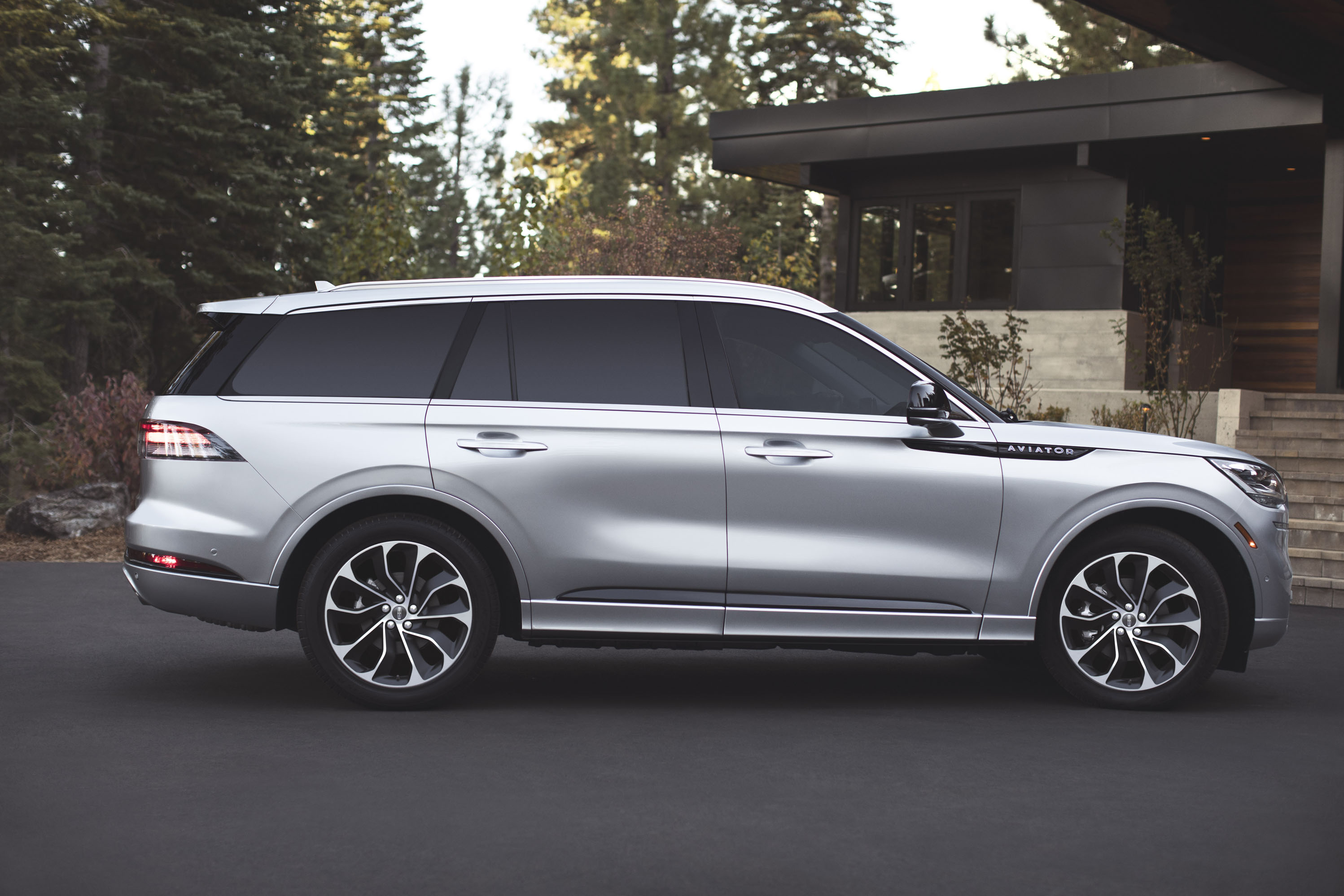
The 2020 Lincoln Aviator gives strong evidence that Ford’s luxury bona fides don’t start and end with the full-size Navigator.
Revealed at the 2018 LA Auto Show, the 2020 Aviator leaps into the niche between the Navigator SUV and the Nautilus crossover, as it revives a nameplate Lincoln hasn’t touched since the 2006 model year.
As it did back then, the new Lincoln Aviator shares some running gear with the Explorer—only this time, it’s the Aviator that’s been spotted in the wild first, as Ford preps the 2020 Explorer for its debut at the 2019 North American International Auto Show in Detroit.
Review continues below
With the new Aviator, Lincoln sets up a dogfight with some of the best luxury SUVs: the new BMW X5 and Mercedes-Benz GLE-Class, the Volvo XC90, and the Audi Q7. We’ll let you know which one rates highest when we get the chance to drive one. (Read more about how we rate cars.)
Based on a new architecture that makes its debut in the new SUV, the 2020 Lincoln Aviator sports three available rows of seats, rear- or all-wheel drive, an air suspension with adaptive dampers, new safety gear, and an available hybrid drivetrain.
The standard drive system will be a twin-turbocharged 3.0-liter V-6, which Lincoln pegs at 400 horsepower and 450 pound-feet of torque. The plug-in hybrid only will be offered on a new Aviator Grand Touring edition; as the most powerful Lincoln ever built, it’ll boast at least 450 hp and 600 lb-ft of torque. Both offerings will couple to a 10-speed automatic.
The new hybrid propulsion system drops an electric motor between the transmission and the engine. A lithium-ion battery pack sits under the floor, on the passenger side, so as not to consume too much storage space. Lincoln hasn’t provided any details on the battery size, its electric-only driving range, its acceleration, or its charge times.
It has outlined the Aviator’s new suspension, which comes with extravagantly named settings. “Showroom” drops the ride height for profiling in the parking lot, while “Entry” limbos lower for easy passenger access. “Excite” notches the Aviator even lower for improved handling and fuel economy, while “Deep” raises the vehicle for snow and other obstacles.
The ride heights team with powertrain drive modes: Normal, Conserve, Slippery, and Deep Conditions drive modes. The Grand Touring gains a Pure EV mode; it allows the vehicle to run on battery power alone. It also has a Preserve EV setting that maintains battery charge at a certain state by drawing on engine power. The 2020 Aviator asks drivers if they’d like to change hybrid modes if the throttle position exceeds the hybrid pack’s abilities. HAL 2000, are you out there?
The Aviator’s predictive suspension interpolates camera data to adjust the suspension, and its electric power steering and stability systems can steer the SUV and adjust the throttle in traffic jams; they can also brake the vehicle when it detects approaching obstacles as it reverses, or steer out of harm’s way when it “sees” obstacles on the road ahead.
The 2020 Aviator will allow owners to open the vehicle with their smartphones, to run almost all its secondary systems (phone, climate, navigation) through massive touchscreen displays or steering-wheel controls, or to adjust their front seats 30 ways. The Aviator’s second-row seats slide on a track for better third-row access, and recline for long-distance comfort.
On the technology front, The new Lincoln Aviator will offer a wide-screen head-up display, wireless smartphone charging, and a choice between two Revel audio systems, one with 3D surround sound and 28 speakers.
Lincoln will offer the Aviator in base, Reserve, and Black Label trims, though the Grand Touring will only be available in base and Black Label.
Lincoln has not set prices, and the EPA has not determined fuel economy ratings yet, since the 2020 Aviator doesn’t go on sale until summer 2019.
0 Kommentarer